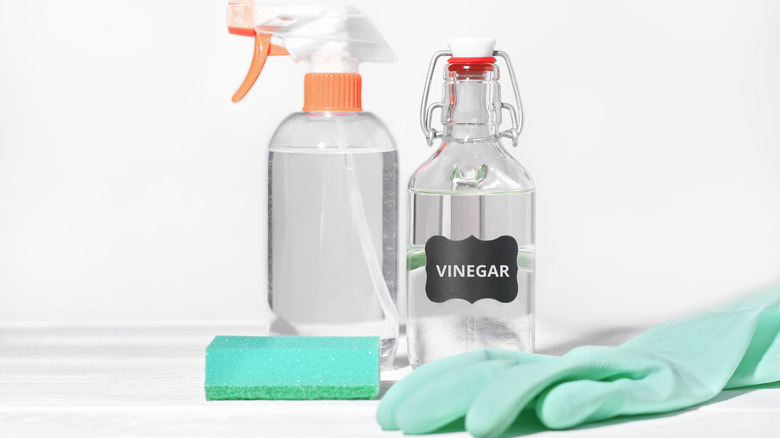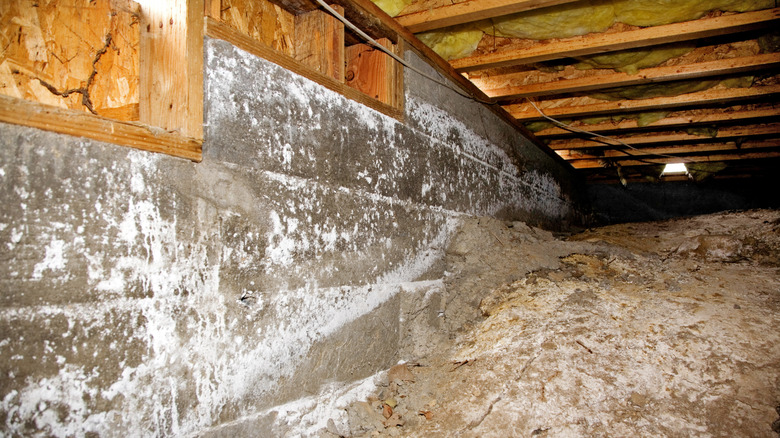Homeowners Urged To Spray Vinegar On Crawl Spaces, But Is It A Good Idea?
Thanks to their design, crawl spaces can be both convenient and budget-friendly. Not only do these large gaps negate the need for concrete slabs, but they also offer air circulation and more options for plumbing. These areas aren't without their troubles, though, and there are certainly disadvantages of a crawl space that you need to be aware of. For one, some homeowners encounter problems with wildlife, including those trying to find shelter. Ironically, while crawl spaces naturally have more airflow, they can sometimes develop mold, too. If you're smelling musty odors and/or seeing black, white, or green spots around your crawl space, chances are high that you have some mold growing there. To counteract the impacts of mold in your crawl spaces, you might have heard about applying white vinegar, as this has been talked about anecdotally. Before spraying vinegar around your own crawl space though, it's important to determine when this DIY method could be helpful, or if you should hire a professional instead.
Vinegar can be a versatile cleaning tool that is often touted as an ingredient that may kill mold. This is all thanks to its acidic qualities, which can actually kill the mold spores. At the same time, while vinegar does have a strong and unpleasant smell, it doesn't carry the same negative health impacts as chemicals like bleach. For these reasons, some blogs recommend using vinegar as a method to clean mold from crawl spaces. This solution may be effective for small areas inside your home, but any widespread mold problem ought to be looked at by a professional only for both safety and overall control.
Vinegar may help treat mold in small areas only
If you do spot mold in a small area in your crawl space, it's important to address the problem immediately to prevent it from spreading. Experts recommend spraying the affected area with undiluted white vinegar until the spot is saturated. After letting the vinegar sit for an hour or more, you can then scrub the moldy spot away with a brush. For safety, you should always wear gloves and a face mask when cleaning with mold. Afterward, you must rinse away the vinegar and residue with clean water and allow it to air dry.
While you can technically get rid of mold using vinegar, this may not be the best solution for widespread problems in your crawl space. As a rule of thumb, experts recommend that you not treat any mold problem larger than 10 square feet on your own. At this point, the mold has likely spread to a point where a spray bottle of vinegar just won't cut it. In these situations, you should consider calling a professional for help. They can treat large areas affected by mold, recurring mold problems, and even find the underlying source of moisture contributing to the issue if you are not able to.
Also, to combat mold problems in your crawl space from the root, you should be thinking about ways you can help reduce moisture in this area. Fixing any leaking pipes and vent screens may prevent mold from forming in the first place, and dehumidifiers can help to regulate excess moisture here, too.

